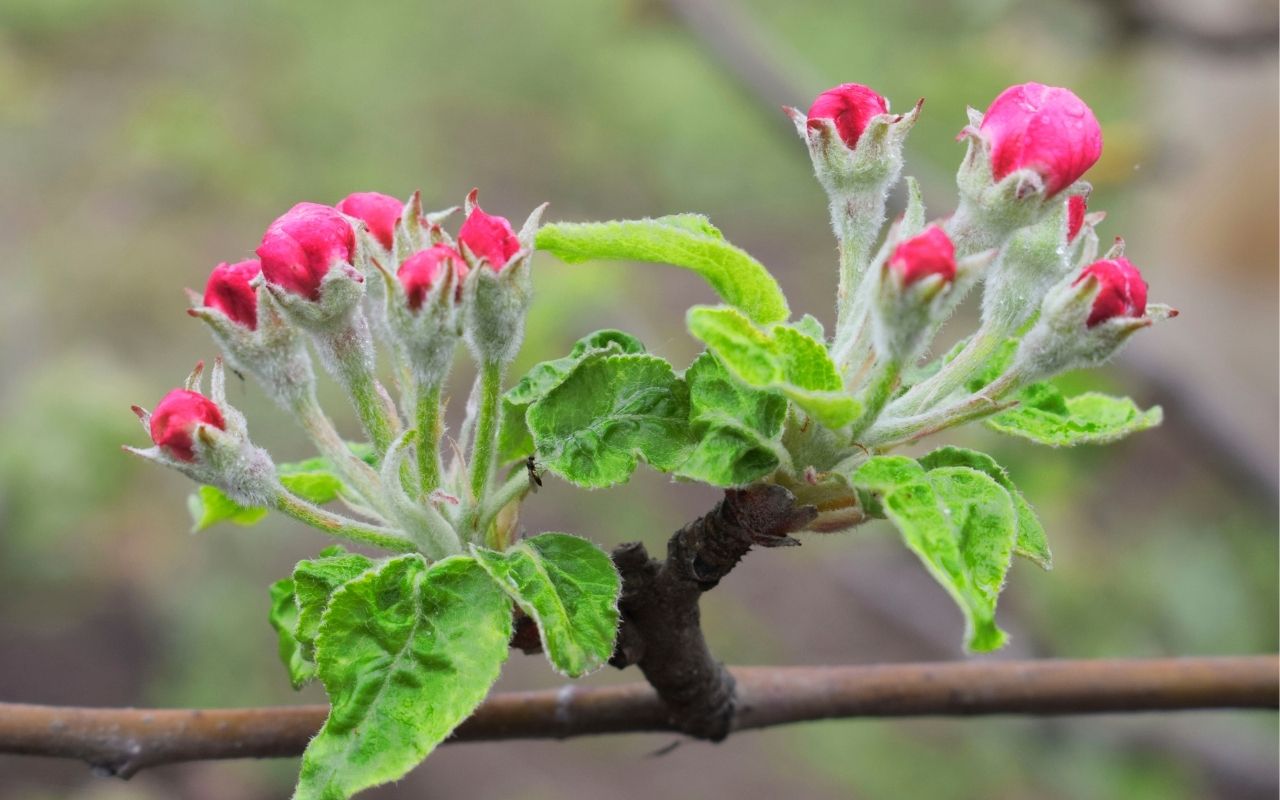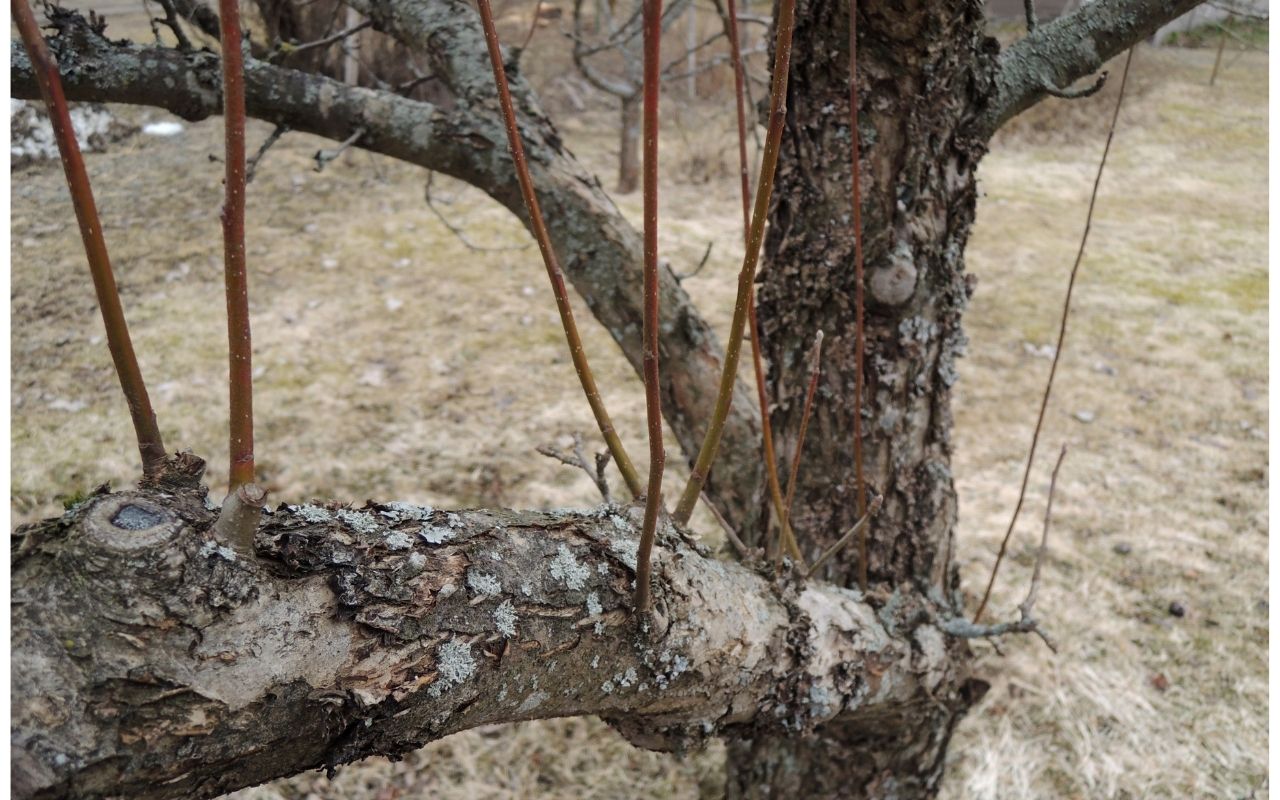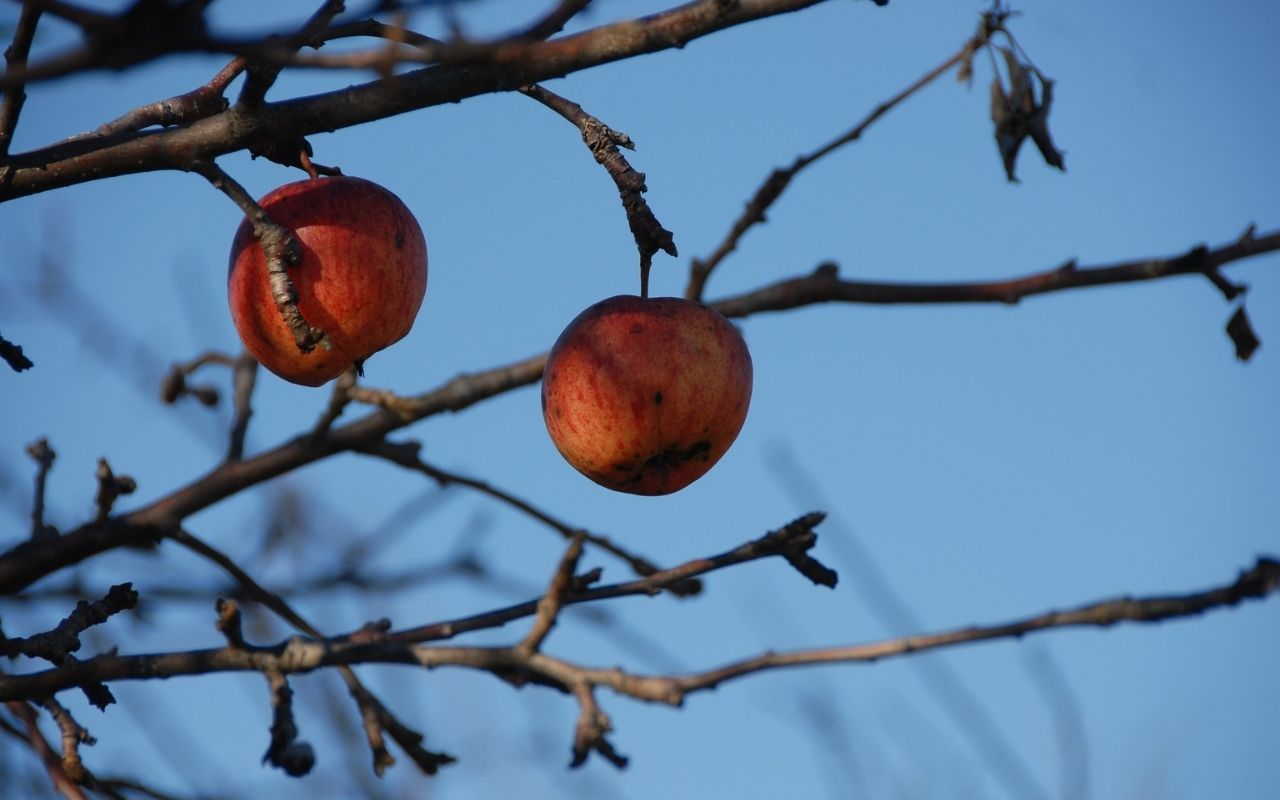
When & How to Prune Fruit Trees
If you have fruit trees, you want them to be productive and vigorous so that you’ll get lots of spring flowers and summer fruit. This means you’ll have to prune them regularly and correctly. Not sure when or how to prune your fruit trees? Don’t worry – read on and you’ll learn just what you need to do.
Many fruit trees grow well in Northern Virginia’s climate zones. For helpful tips about growing fruit trees in Northern Virginia, see these articles:
- Our recommendations for the best fruiting trees you can choose for a successful home orchard or striking specimen
- How and where to plant your trees to keep them healthy
- Tree Staking FAQs: Why, When & How to Stake a Newly-Planted Tree
With the right pruning, you’ll be all set for years of summer fruit.
Reasons to Prune Fruit Trees
Many trees in our urban and suburban environment benefit from regular pruning. But fruit trees, in particular, need regular – and proper – pruning. Here’s how regular maintenance pruning will help your fruit trees –
- Open up the tree canopy to allow more sunlight to infiltrate the inner parts of the tree – Fruit needs sunlight to ripen. Proper pruning removes branches and leaves that shade out developing fruit while still maintaining enough leaves to generate the energy needed for fruit growth.
- Improve airflow through the canopy – Many types of fruit are susceptible to fungal problems. Increasing airflow through the tree canopy by removing excess branches and leaves can reduce fungal attacks.
- Keep trees compact so you can reach the fruit – Proper pruning improves tree structure for long-term strength and health by limiting the tree’s height and width while maintaining a central leader. This will help prevent your fruit tree from splitting or fracturing during storm conditions or when heavily laden with fruit. It also helps ensure that fruit doesn’t grow out of reach.
- Minimize the growth of water sprouts – Water sprouts are thin, spindly, upward-growing branches that quickly grow in response to fruit tree pruning. These growths drain energy from the tree (so it produces fewer fruits), block sunlight and airflow through the center for the tree (leading to fungal problems and unripe fruit), and can cause damage to other branches by rubbing against them. Proper fruit tree pruning done at the right time of year can minimize and/or remove water sprouts.
- Encourage the growth of more fruit! – When done correctly, pruning encourages a plentiful supply of new fruit-bearing limbs (not water sprouts!)
When to Prune Fruit Trees
You can prune commonly-grown Northern Virginia fruit trees (such as apple, pear, or cherry) at any time of year, especially if there are structural problems or damage that needs to be fixed. However, there are a few things to keep in mind during different seasons.
- Spring Pruning – Pruning out too many branches in early spring may cause excessive loss of sap and can lower fruit yields.
- Summer Pruning – This removes leaves (which provide “food” for the tree), slows fruit ripening, and exposes fruit to sunburn. However, it’s a good time to cut out water sprouts without triggering excessive regrowth. If you’re not concerned about fruit yield, pruning in summer pruning can slow down the growth of overly vigorous trees or structurally prune a tree that has not been pruned in many years.
- Winter Pruning – This is usually the ideal time for serious pruning because the tree is dormant. Just don’t prune your trees when the temperature falls below 20° F – the extreme cold can cause dieback in pruned branches.
Pruning Fruit Trees in Winter
Fruit trees grow in concert with the year’s annual cycles. From their first spring flowers to their last dropped autumn leaf, trees respond to changes in temperature and hours of daily sunlight.
After the last fruit has been picked and the last leaf raked up, trees begin to enter dormancy. Dormant means “sleeping,” and that’s what your trees do until spring arrives.
What all fruit trees have in common is that the best time to prune them is during the dormant season, with late winter being ideal. Whether you’re pruning to shape the entire tree, to control its growth, or to encourage more fruiting, pruning during dormancy gives you the most benefits with the least risk of injury or damage. When leaves are off, you can better see a tree’s branching structure and make more precise cuts. And because insect pests and disease pathogens are not active during winter’s cold, dark months, your pruning cuts won’t leave your trees vulnerable to infestation.
Winter, including late winter/early spring, is the ideal time to prune your fruit trees.
Curious? We’ve got more details about the benefits of winter pruning.
What to Prune
No matter what you’re cutting off, always remember this important rule about pruning: all pruning should be minimal, removing only what is required. One of the benefits of regular pruning over the course of a shrub’s or tree’s life is that the least amount of branches and foliage are removed each time. And what is removed is done with an eye to the overall shape and vigor of the plant.
Old Wood vs New Wood
Not all fruit trees have the same flowering and fruiting habits. Some fruit trees, such as apples, make flowers and fruit on what is called “old” wood. This refers to branch growth that developed during previous growing seasons. In contrast, trees that develop fruit on the current season’s growth are referred to as fruiting on“new” wood.
When pruning fruit trees, keep an eye out for the sometimes-subtle differences between old and new growth. To distinguish older wood from newer, look for a point along a twig where bark and buds change appearance:
- older, flowering buds will be in clusters on a wrinkled or compressed lateral stem
- new growth will have single buds emerging from the main stem
On cherry trees, for example, all buds will be smooth and shiny but fruit buds on older growth are in clusters and older wood may have a more pronounced bark color and more visible bark lenticels, or pores.

Apple trees produce flowers and fruit on mature spurs
Pruning Fruit Spurs
Trees that fruit on older wood will develop fruit spurs. These short, lateral, or side, shoots produce flowers and then fruit. Spurs may form in clusters, such as on apple trees, or along lateral branches, such as on peach trees.
Some spurs will be productive for up to 10 years (such as those on apple, pear, and cherry trees), while others only produce spurs on second-year wood (e.g., peach and nectarine). Trees with long-lived spurs are pruned to maximize the number of spurs (don’t cut them off). For trees that fruit on short-lived spurs, you’ll want to cut off the spurs to force new branch growth; these branches will develop spurs and fruit in their second year of growth.
These popular Northern Virginia orchard tree species grow fruit from spurs:
- Apple and Crabapple
- Cherries
- Pears
- Pomegranate
- Plum
- Peach
- Nectarine
- Quince
While they may look weird (for example, on apple trees they grow irregularly and are often covered in gray fuzz) spurs are where fruit comes from. If you cut off all the spurs, you won’t have any fruit. So, learn to identify fruiting spurs for each type of fruit tree you have.
Pruning Trees That Fruit on New Wood
Not all fruit trees develop fruit on spurs or old wood (although most do). One of our area’s popular fruit trees, the fig (Ficus carica), fruits on new wood, as do persimmon and mulberry. This means you don’t need to worry about spurs. Instead, focus your winter pruning more on shaping and controlling the growth of the whole tree.
Another unique trait of the common fig tree is that, depending on weather and your cultivar, you may see an early crop of figs in spring below the terminal leaf buds. These early fruits are called “breba” and are not your fig’s main crop, which develops in summer. Most growers remove the breba fruit when it appears so that the tree spends its energy on developing its summer fruit. You don’t have to prune off any wood to remove these first figs.

Watersprouts, like these on a mature apple tree, should be removed to open up the tree canopy and increase fruit production
Need a Hand?
Along with other winter tree care, pruning is one of the important annual tasks you should do for your fruit trees.
If you’re not sure of your pruning skills, don’t guess. You can make mistakes that will affect your fruit tree’s long-term growth and fruit production. Instead, call in the tree care professionals at Green Vista to assess and carefully prune your trees. Similarly, if you don’t have the tools, the time, or the energy to prune your fruit trees this winter, give us a call. We work year-round and can help prepare your fruit trees for spring growth to ensure your best summer fruit harvest.
In need of tree care services?
Give us a call at 571-244-3838 or request a quote online!
More Articles From Green Vista Tree Care








